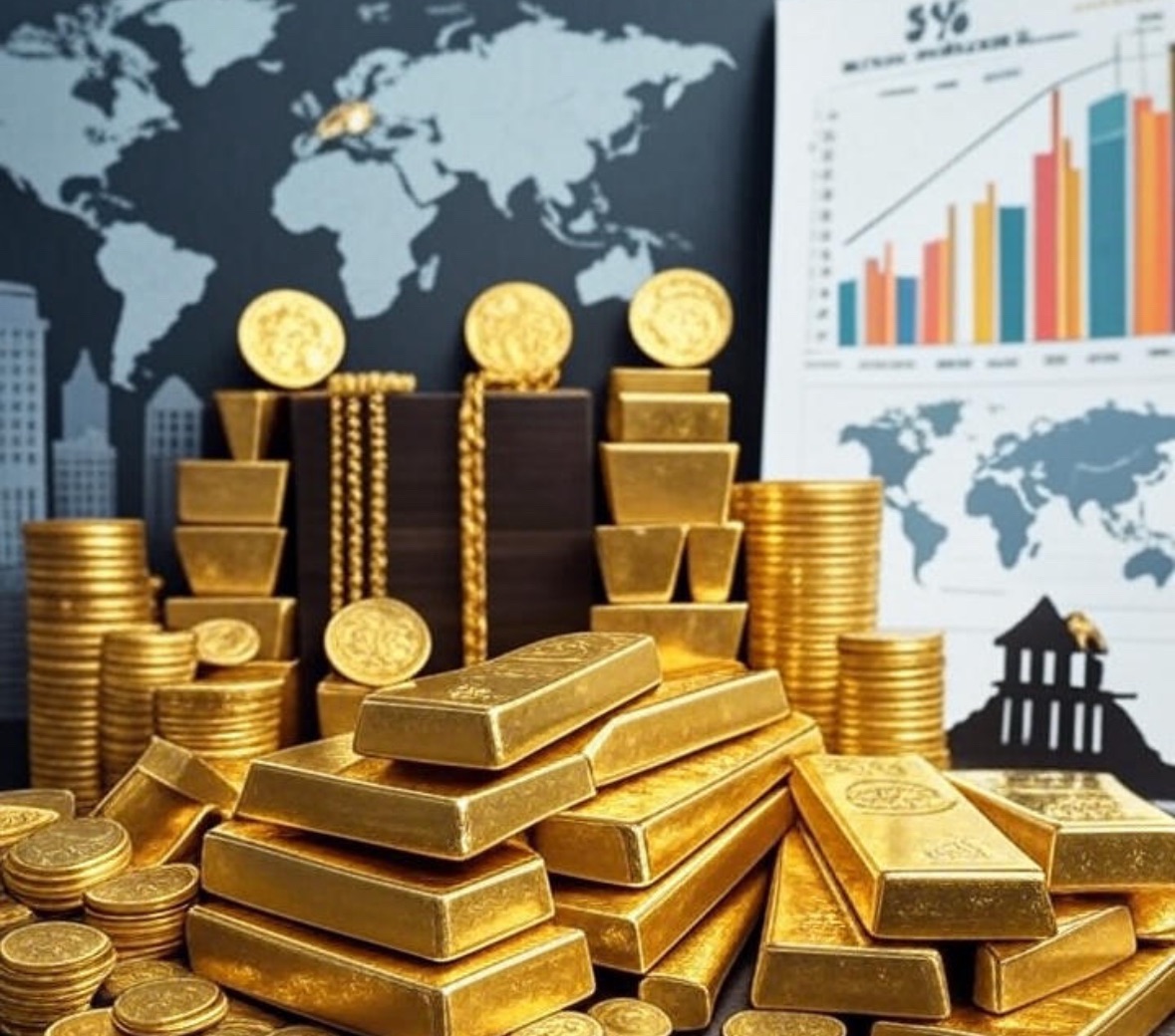July 31, 2025 – The World Gold Council’s Q2 2025 Gold Demand Trends report, released today, reveals a robust 3% year-on-year increase in global gold demand, reaching 1,249 tonnes in the second quarter. Measured by value, total gold demand soared by 45% to an unprecedented $132 billion, marking a historic high in a record-breaking price environment. The surge, driven by strong investment flows, central bank purchases, and persistent geopolitical uncertainties, underscores gold’s enduring role as a safe-haven asset.
Investment Demand Drives Growth
A key driver of Q2’s demand was a second consecutive quarter of significant inflows into global gold-backed exchange-traded funds (ETFs), which recorded 170 tonnes of inflows, a stark contrast to the small outflows observed in Q2 2024. Asian-listed funds contributed substantially, adding 70 tonnes, while U.S. funds kept pace with similar inflows. This momentum, combined with a record-breaking first half for ETF demand (397 tonnes, the highest since 2020), highlights a renewed investor appetite for gold amid volatile global markets.
Bar and coin investment also played a pivotal role, rising 11% year-on-year to 307 tonnes. Chinese investors led the charge with a 44% increase to 115 tonnes, while Indian investors added 46 tonnes, reflecting strong retail demand in key Asian markets. Louise Street, Senior Markets Analyst at the World Gold Council, noted, “The robust investment activity we have seen in the first half of 2025 underscores gold’s role as a hedge against economic and geopolitical risks. Ongoing market volatility, coupled with gold’s impressive price performance, has generated significant momentum.”
Central Banks and Geopolitical Tensions
Central banks remained a cornerstone of demand, adding 166 tonnes to global gold reserves in Q2. While this pace moderated compared to previous quarters, it aligns with a broader trend of sustained central bank buying, with over 1,000 tonnes purchased annually for the third consecutive year in 2024. The World Gold Council projects that central banks will continue to bolster reserves in 2025, driven by geopolitical flashpoints and trade tensions, particularly following recent U.S. tariff policies and retaliatory measures from China.
The report highlights that gold’s 26% price appreciation in dollar terms during the first half of 2025 outperformed many major asset classes. With prices hovering near or above $3,000 per ounce, gold’s allure as a hedge against inflation and monetary instability remains strong. Juan Carlos Artigas, global head of research at the World Gold Council, emphasized, “Gold is a global good. Its demand is shaped by jewelry buying in India, bar and coin sales in China, and central bank purchases across emerging economies.”
Jewelry Demand Under Pressure
Despite the overall strength in demand, jewelry consumption faced challenges due to record-high gold prices. Quarterly jewelry demand declined year-on-year, with volumes falling across most regions. However, spending on gold jewelry rose universally, reflecting the impact of elevated prices. India, now the world’s largest gold jewelry market, showed resilience with only a 2% decline in tonnage, supported by strong demand during festival and wedding seasons. In contrast, China saw a sharp 24% drop, while the U.S. and Europe recorded their weakest jewelry demand in five years, pressured by high living costs and reduced disposable income.
Supply Dynamics and Market Outlook
On the supply side, total gold supply increased by 3% to 1,249 tonnes, matching demand. Mine production set a new Q2 record, while recycling rose 4% year-on-year to 1,370 tonnes, the highest since 2012, driven by elevated prices. However, recycling remained relatively subdued given the price environment, suggesting potential for further increases if prices remain high.
Looking ahead, the World Gold Council anticipates that central banks and ETF investors will continue to drive demand in 2025, supported by macroeconomic uncertainty and potential interest rate volatility. However, jewelry demand may remain under pressure if prices stay elevated and global economic growth slows. The upcoming Central Bank Survey in June 2025 and the mid-year market outlook will provide further insights into sovereign gold accumulation and macroeconomic trends shaping the market.
Conclusion
The Q2 2025 Gold Demand Trends report underscores gold’s resilience as a strategic asset in an increasingly unpredictable global landscape. With record-breaking demand value, sustained central bank buying, and robust investment flows, gold continues to solidify its position as a store of wealth and a hedge against risk. As Artigas aptly stated, “Once you understand both the consumer and investment dynamics, gold’s role in the global market starts to make sense.” Investors and policymakers alike will be watching closely as gold navigates the complex interplay of geopolitical tensions, economic shifts, and record-high prices in the months ahead.
